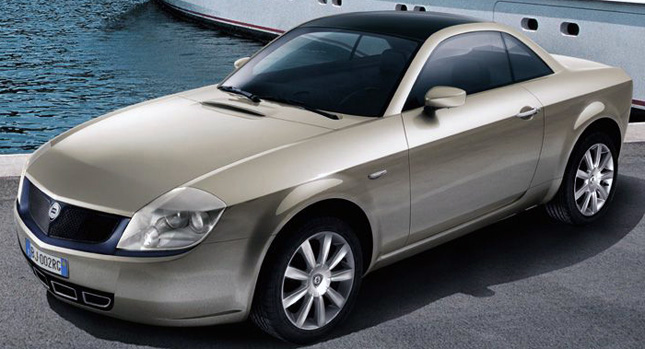Of all the car-making nations in the world, Italy has probably the richest tradition in manufacturing affordable coupes. Even in the 1990s and early 2000s, when the Fiat Group wasn’t in great financial shape, the affordable Italian coupe lived on through the Fiat Coupe and Alfa Romeo GTV.
Both were offering Italian style and decent performance for an affordable price, but during this time, Fiat’s other brand, Lancia, had no sports coupe in its lineup, (well, there was the Kappa Coupe, but it was nowhere near a sports car)
However, at the 2003 Frankfurt Auto Show, Lancia unveiled the Fulvia Coupe, a concept that sought to revive the nameplate that designated a very successful coupe built in 140,000 units between 1965 and 1976. The concept’s neo-retro styling followed closely the lines of the original Fulvia coupe, both outside and inside.
Even the dimensions and three-box shape of the Fulvia Coupe show car were identical to those of its predecessor, with the exception of the track, which had been broadened to give the car greater stability. The concept vehicle had a two-seat layout and a retro-styled dashboard.
However, the 2003 Fulvia Coupe was more than a styling exercise. The car looked very much like a pre-production prototype. Lancia engineers developed all the exterior parts to keep down drag, while also using lightweight parts. The front-wheel drive Fulvia Coupe Concept weighed only 990 kilograms (2,182 lbs), thanks to the use of aluminum for its body panels and the engine block.
Power came from a 4-cylinder 1.8-liter engine developing 138hp (140PS / 103kW), with performance figures being decent: 0-100 km/h in 8.6 seconds and a top speed of 213 km/h (132 mph). Thanks to its low weight, the Fulvia Coupe boasted an excellent weight to power ratio of 7 kg/bhp. This helped to obtain an average fuel consumption of 7.3 liters/100 km (32 mpg US) over a combined cycle.
There were good premises for handling too, as the car had a McPherson front suspension layout with telescopic struts, coaxial coil springs and lower wishboness and a rear suspension with longitudinal arms and antiroll bar. No electronic aids were added, as Lancia wanted to keep the pure sporty drive of the original car.
So why didn’t the Fulvia make it to production? It was a combination of bad luck (Fiat’s financial situation) and the fact that it was based on an ageing Mk 2 Punto platform. Although in 2008 rumors circulated about a revival of the concept with a newer platform, unfortunately, nothing happened to this day. Which brings us to the inevitable question: would the Fulvia have changed Lancia’s fate had it been produced?
By Dan Mihalascu
PHOTO GALLERY


























